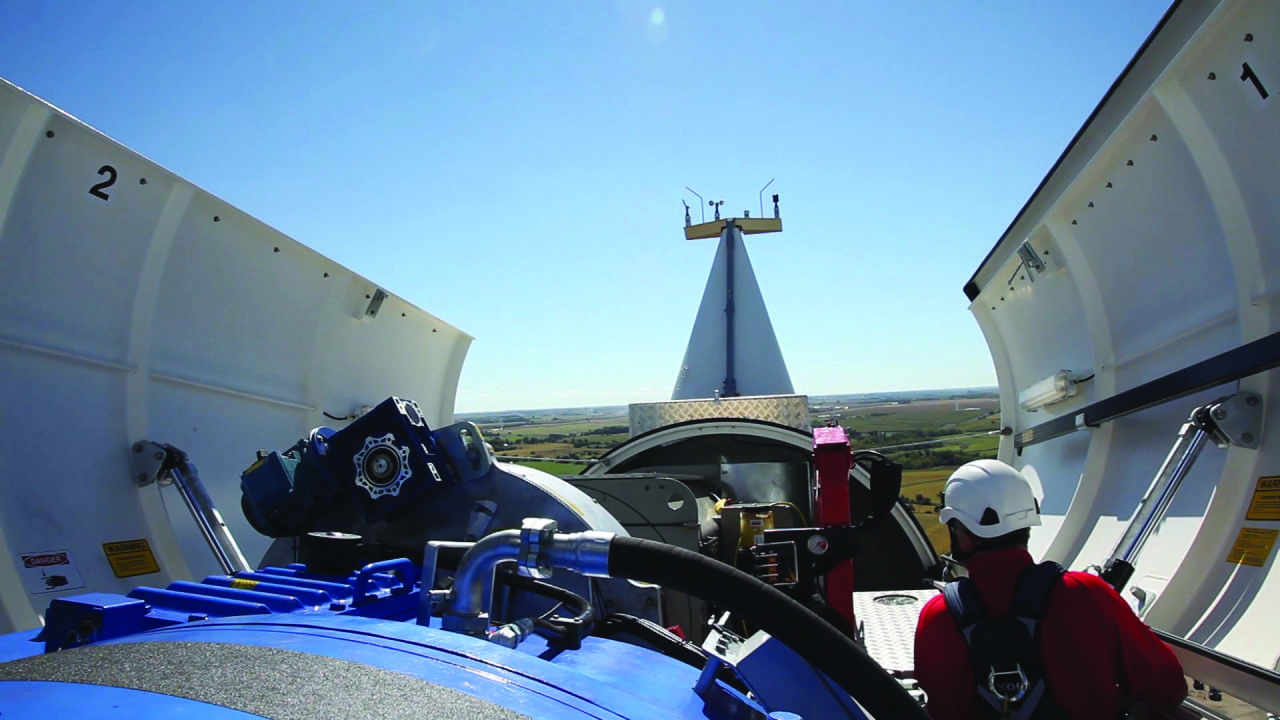Predictive analytics software offers many benefits when appropriately selected. However, finding the best solution for a given situation can be tricky. The tips provided here could help power companies avoid frustration by ensuring the right product is chosen and its features meet company needs.
Revolutions can be scary, creating challenges, causing chaos, and crushing certainty. Today we are in what could be called a Fourth Industrial Revolution, with the merging of the digital and physical worlds.
Engineers have been at the center of all transformations since the First Industrial Revolution. That’s still true, and now engineers have an even greater role in delivering a more productive, efficient, safe, and secure world for industry.
An important tool for today’s engineers is the ability to predict the failure of a machine before it occurs, or predictive maintenance. This has been made possible by the commoditization of sensors generating data, cheap cloud storage, and significant advances in computer science.
For these insights to deliver value, engineers and frontline workers must act on them (Figure 1). Insights without action are useless.
Finding the Right Fit
Selecting predictive analytics software and products is a significant decision, and engineers should be at the center of the discussion. As power companies consider which solution will best meet their needs, they should ensure the following best practices are among the selection criteria.
Put Human Ingenuity First. Technology should leverage the best of the engineering team’s knowledge to continuously learn and improve. Predictive analytics software should provide engineers with the ability to tell the software whether a recommendation was correct, or wrong. Data science models get smarter the more valuable data they have. But data doesn’t just come from sensors; it comes from humans too. The best products allow capturing all the inputs possible—whether from machines or people.
Ensure Products Are Easy to Use and Intuitive. The software should be user-friendly for everyone, from the technician to the site supervisor to the CEO. Unlike consumer technology, which often can be used with little or no training, companies have mistakenly given up hope that software used in the industrial space and in large organizations can be enjoyable or intuitive. That may be fine in some areas, but not in predictive analytics.
Insights from predictive analytics software must be acted on for the software to have an impact. A technician still must go on-site and climb the wind tower to fix a part (Figure 2), or visit the plant to replace a component. The goal of predictive analytics software is to equip workers with insights to master machines instead of machines mastering them. Ideally, industrial software programs should be as easy to use as a smartphone.
The best predictive analytics software makers understand how work is performed and, more importantly, how the software can help people do their jobs better. Does the software fit into the processes already in place? Does it function in the physical space where work is performed every day? If not, it may be more trouble than it’s worth.
Identify Measurable Outcomes. Any predictive analytics product purchased should not leave users asking how or whether it helped. For years, large organizations and industries have bought software and IT products to be used across organizations. Massive amounts of capital have been allocated annually to IT. In 2016 alone, analysis firm International Data Corp. found that companies spent $2.4 trillion on IT products and services, and the trend shows no sign of slowing down. The same organization predicted that the number would increase to $2.7 trillion by 2020. For most businesses, technology systems and services are an annual sunk cost—an inevitable part of doing business.
For all that money, though, few companies could tell you what value they received. Did all those services and products actually provide a return on investment? In the energy industry, anyone from an engineer to a technician to the CEO should be able to quickly confirm that more energy was produced because the assets were more reliable, safe, and secure. If that isn’t possible, perhaps it’s time to turn off the data stream to the predictive analytics company and walk away. It doesn’t make sense to be saddled with a bunch of expensive technological tools that aren’t providing value.
Coordinate Incentives.With multiple players in the predictive analytics market, it can be confusing to know what is hype and what is true. The best way to separate the two is to determine whether company goals are the same as predictive analytics vendor objectives. Thoroughly review and understand how service providers are compensated.
Be sure to ask hard questions if the original equipment manufacturer is the company providing the software that monitors the equipment’s health. Verify that the insight generated by the predictive analytics software leads to repair of a part that is actually damaged or would likely fail—not an insight that leads to more parts being sold to pad revenue.
Confirm Usability Across Fleets and Manufacturers. Engineers in the power industry many times are responsible for different types of assets, whether wind, solar, natural gas, or coal. Even within the same source of generation, such as wind, there are often different manufacturers of turbines (Figure 3). Having different predictive analytics software for different turbines makes an engineer’s job more complicated and difficult, when the product should make it simpler. To get the most value from predictive analytics and reduce complexity, use software that works across different types of assets, and assets with different manufacturers.
Know What Is (and Isn’t) Being Bought
Companies must have a thorough understanding of exactly what they’re getting with predictive analytics software. There are package variations and variable levels of service in the market. Many suppliers do not offer complete solutions. Several provide a platform, while others provide a platform, data science models, and useful tools. Some offer a variation in which the platform and data science is supplied, but users must develop the applications that deliver insight to workers. Factor in additional integration and development costs if incomplete options are chosen.
The best solutions require little configuration. They simply need users to provide the raw material—data. It is then run through a factory of prebuilt data science models, and in the end, the solution produces insight that can be acted on to deliver value.
Industrial revolutions have always needed human ingenuity, imagination, and skill. This time, engineers have a greater opportunity to shape change, including the selection of predictive analytics software that empowers a mastering of machines. This revolution is not so scary. ■
—Michael Donohue is vice president of energy at Uptake, a predictive analytics company.
https://www.powermag.com/best-practices-for-choosing-a-predictive-maintenance-partner/


